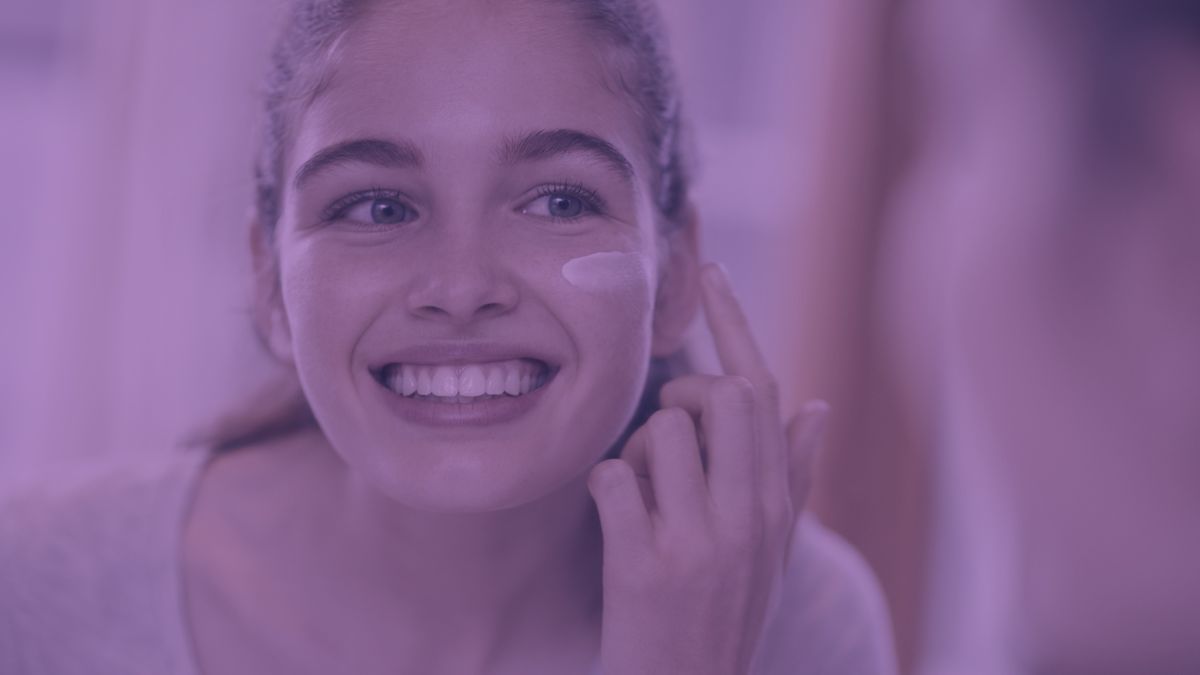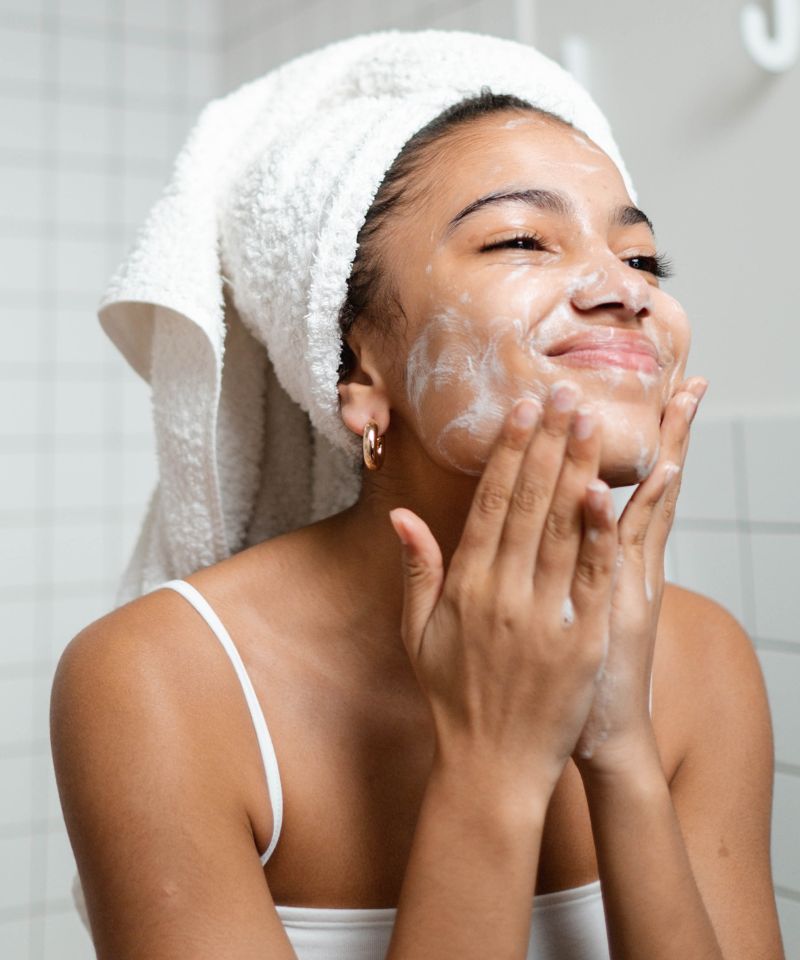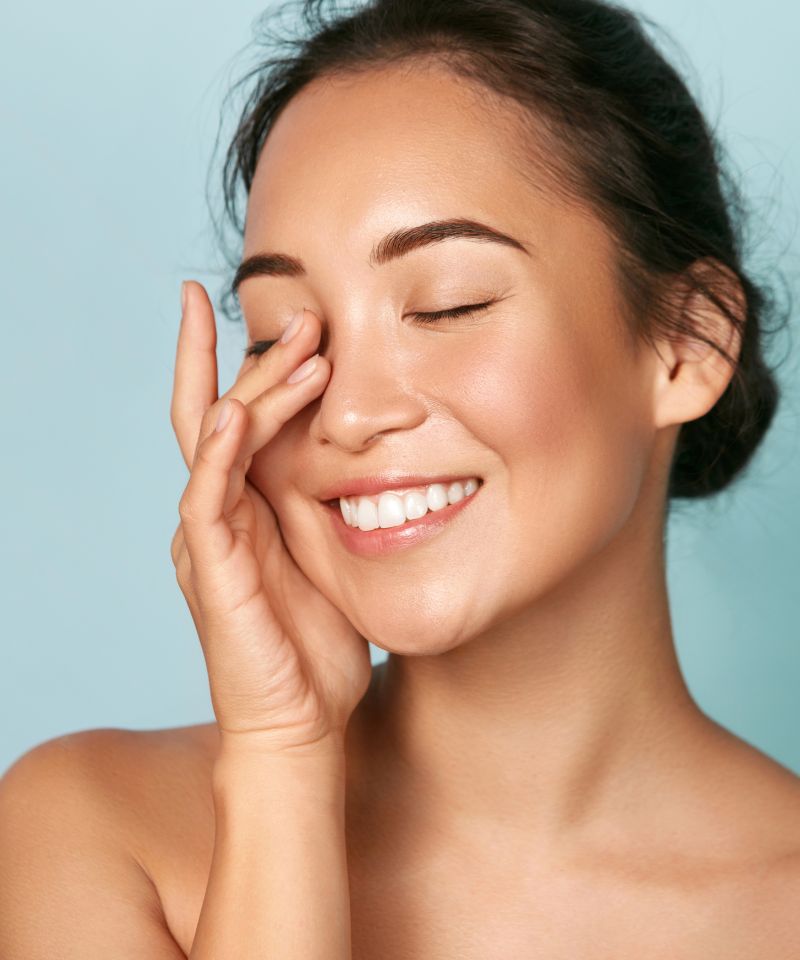Azelaic acid and benzoyl peroxide are proven more effective at targeting inflammatory skin conditions such as acne than either component on its own.
Therefore, azelaic acid and benzoyl peroxide can be used to soothe and treat existing acne breakouts and prevent new ones from forming.
However, while effective, this ingredient combo should be used with caution as incorrect use can result in potential side effects.
Therefore, in this article, we will talk about the benefits and risks of using azelaic acid and benzoyl peroxide together, as well as how to properly combine these two actives for the best results and no unwanted reactions.

How Does Azelaic Acid Work?
Azelaic acid is a type of acid with antibacterial, anti-inflammatory, and antioxidant properties.
The component is effective in the treatment of comedonal or non-inflamed acne, such as whiteheads and blackheads, as well as inflammatory acne, such as papules, pustules, and cysts, as well as hyperpigmentation, which is a skin disorder that occurs as a result of excess melanin production following some sort of skin trauma.
While the mechanism of action is not entirely understood, azelaic acid is believed to work by inhibiting mitochondrial oxidoreductase activity and DNA synthesis.
This means that it suppresses inflammatory cytokines and decreases bacterial proliferation, which helps minimize existing blemishes and normalizes the skin’s shedding process, resulting in less clogged pores and fewer breakouts.
In addition, azelaic acid also inhibits the production of excess melanin in the skin—helping to reduce discoloration caused by hyperpigmentation.
Finally, and due to its anti-inflammatory properties, azelaic acid is also one of the best ingredients for those dealing with rosacea as it helps relieve some symptoms, such as pustules and excessive redness, without irritating the skin.
In skin care, azelaic acid comes in various strengths; however, you can only buy over-the-counter products that contain this component in up to 10%. On the other hand, you can also have azelaic acid prescribed by a dermatologist, and that option is usually 15-20%.
Some benefits of azelaic acid include:
- Reducing inflammation and bacteria in the skin.
- Fighting acne blemishes.
- Helping to even out skin tone.
- Improving hyperpigmentation.
- Calming rosacea symptoms.
How Does Benzoyl Peroxide Work?
Benzoyl peroxide is a member of the peroxide family, a group of chemicals made up of oxygen and hydrogen molecules, and is classified as a topical antibiotic.
Found in over-the-counter skincare products such as cleansers, gels, and ointments, benzoyl peroxide is a component that targets the acne-causing bacteria and minimizes its overgrowth by carrying oxygen in the pores, and destroying the airless environment this pathogen thrives in.
Effective at minimizing mild, moderate, and even severe inflamed acne lesions, benzoyl peroxide can be used on the face and body, as well as underarms and other areas that are prone to breakouts.
Additionally, benzoyl peroxide is also known as a keratolytic agent, which means it can break down the keratin on the skin’s outermost layer and decrease its thickness, visibly refining skin texture and allowing for other treatments to penetrate deeper into the skin.
Some benefits of benzoyl peroxide include:
- Destroys the acne-causing bacteria inside the pores.
- Unclogs pores and reduces inflammation.
- Reduces oil production in the skin.
- Refines skin texture and enlarged pores.
- Improves product penetration into the skin.
Can You Mix Azelaic Acid With Benzoyl Peroxide?

Some studies have shown that mixing azelaic acid with benzoyl peroxide has achieved a higher efficacy in treating inflammatory conditions such as acne compared to benzoyl peroxide alone.
And while this means that the two ingredients can be combined for the treatment of acne, using them together, especially in high concentrations, has the potential to be more irritating to the skin.
For example, while azelaic acid is an anti-inflammatory component, high concentrations of up to 20% will require some adjustment, which is why it’s recommended to start using this ingredient in lower concentrations or, if possible, gradually increase usage instead of starting with higher concentrations right away.
On the other hand, benzoyl peroxide can also dry and irritate the skin if used frequently and in high concentrations.
Therefore, while azelaic acid and benzoyl peroxide can be combined, it’s important to use them with caution and monitor potential side effects that could be signs that your skin is irritated or too dry and needs some adjustment.
The Benefits of Using Azelaic Acid With Benzoyl Peroxide
Here are some of the benefits of using azelaic acid with benzoyl peroxide:
- Higher efficacy in addressing acne.
- Faded hyperpigmentation.
- Refined skin texture and enlarged pores.
- Smoother, evened-out complexion.
- Reduced bacterial overgrowth.
The Side Effects of Using Azelaic Acid With Benzoyl Peroxide
On the other hand, here are some potential side effects of using azelaic acid with benzoyl peroxide:
- Dryness.
- Redness.
- Irritation.
- Peeling.
- Flaking.
- Discomfort.
How to Mix Azelaic Acid and Benzoyl Peroxide Correctly?

The correct way to combine azelaic acid and benzoyl peroxide is to:
- use low concentrations of both ingredients
- gradually increase azelaic acid and decrease benzoyl peroxide
- have a complete skincare routine that supports the active ingredient and helps your skin adapt.
First of all, it’s best to start with lower concentrations of both ingredients (azelaic acid up to 10% and benzoyl peroxide up to 2.5%) as this will reduce the potential of experiencing adverse effects such as compromised skin barrier, dryness, redness, irritation, and discomfort.
Next, as your skin adjusts to the azelaic acid, start decreasing the concentration and frequency of benzoyl peroxide until you can completely cut it off from your routine when your acne has healed.
This is because benzoyl peroxide is a bandaid for acne and not a long-term solution, as; as an antibacterial component, benzoyl peroxide will destroy all bacteria in its path, and this includes both the bad and the good bacteria that are a part of our microbiome and have important roles in maintaining our skin health, including preventing the growth of other, potentially harmful microbes.
This will lead to an imbalance, and with the lack of good bacteria, the harmful bacteria can proliferate and cause even more skin issues, including more severe breakouts.
Therefore, cutting benzoyl peroxide out of your routine after some time of using it will give the bacteria in your skin a chance to balance out and participate in the healthy functioning of your skin instead of just killing them all off.
Azelaic acid, on the other hand, can be used for prolonged periods and can be a long-term staple in your skincare routine, as, similarly to retinoids, the skin will keep getting better the more you use it.
Finally, when combining azelaic acid and benzoyl peroxide, you need to have a complete skincare routine that will support the skin barrier and the function of the active ingredients, as well as minimize the risk of experiencing adverse effects.
A complete skincare routine will consist of products such as a cleanser, hydrating serum, moisturizer, and sunscreen, all of which should be carefully picked out depending on your skin type, skin concern, and current skin needs.

My name is Simone and I am a certified skin specialist. I created this website to teach my readers how to take great care of their skin and I also like to occasionally share my honest opinions on skincare products I’ve tried. You can learn more about me here.
